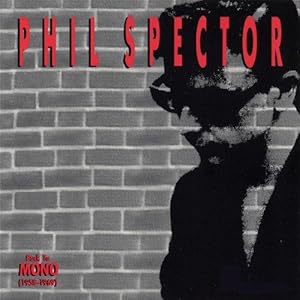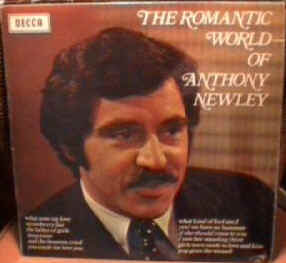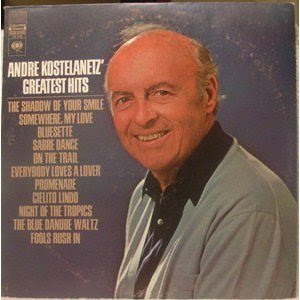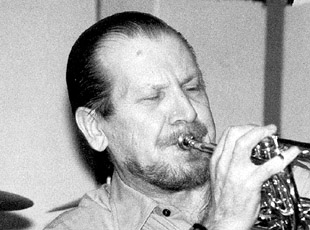 We nevah eveh do anything nice ... and easy....
We nevah eveh do anything nice ... and easy....The newspaper lamented the fact that the city had not much soul; they were commenting on the relatively poor turnout at concert given the previous evening by The Ike & Tina Turner Review. That was in the early 70s, and even then in my adolescence something about it struck me as unfair. The city, I would have told them, had plenty of soul. The radio was full of the Philly soul of Jerry Butler, The O’Jays, The Spinners, the commercial slick soul of Stevie Wonder, the come-on fast-talk soul of Marvin Gaye, the proto-disco of MFSB and The Three Degrees, the Hollywood soul of Earth, Wind & Fire. We heard Gladys Knight & The Pips, Barry White, The Undisputed Truth.
I knew even then that Ike & Tina weren’t exactly typical soul. Dave Marsh delicately described their approach as Ike turning Tina “into one slavering advertisement for a hot ...” - well, something not nice. What they were was soul burlesque – everything outsized, everything exaggerated. And though Marsh may have exaggerated, they weren’t exactly subtle about the message they were sending on stage.
And Tina said it; they never did anything “nice and easy.” Oh, they did ballads, but the ballads were intense, never mellow, never seductive, which is a bit ironic given their overall approach.
The first song I ever heard by Ike & Tina on the radio was Proud Mary; the last was Proud Mary. It’s true that our local top 40 station played soul; it’s also true that, apart from their one big hit, it didn’t play Ike & Tina. That alone could explain the less than stellar concert attendance.
I picked up a collection called
Soul Sellers that featured a few of their bigger early hits; the rest were from 1969 on. That left a big gap. I picked up a few more of their early songs from some random bargain cassette, and their mid 60s Phil Spector recordings from
Back To Mono, the Phil Spector anthology. Over they years Ike & Tina recorded for Sue, Kent, Philles, Minit, Blue Thumb, Liberty and United Artists. Those are just the ones I know about. Their collections seem to have a gap from about 1964 to 1969. Possibly they didn't do much then; I have no idea...
Ike & Tina Turner:
•
River Deep Mountain High – After the Righteous Brothers, Phil Spector’s next project was Tina Turner. He sent Ike away (paid him $25,000, according the gods on Wikipedia, to stay away), though the name of the act remained Ike & Tina, put Tina in front of his legendary wall of sound, and the result has long been considered a masterpiece by the pundits. The radio stations, though, wouldn’t play it, because they didn’t like Spector, and so it only made it to number 88 on Billboard. (It reached number 3 in the UK). The song, written by Spector with Ellie Greenwich and Jeff Barry, ties childhood sentimentality to adult hormones, and Tina lets loose on the chorus as only Tina can do. From the summer of 1966. The Supremes & The Four Tops put it into the top 20 in 1970, and Harry Nilsson did a splendid version on his first LP.

•
Save The Last Dance For Me – Another Phil Spector production. This cover of The Drifters hit from 1960 doesn’t work all that well, with Tina turning the gender around, and she can’t really play the wallflower very well.
•
Nutbush City Limits – Tina and the group sing of the most mundane urban reality, and set the whole thing on fire. From the fall of 1973.
•
I Want To Take You Higher – There are different ways to be high. Likely Sly & The Family Stone sang of chemical highs on the original. Tina was thinking of something else. From the summer of 1970.
•
I’ll Never Need More Than This – Starts like You Can’t Hurry Love, and Tina’s unique personality promptly gets buried under Spector’s arrangement.
•
A Love Like Yours – Originally recorded by Martha & The Vandellas, whose version wasn’t a hit, this is a tribute to a guy with no boundaries. She is very grateful for his generous and kind nature, but trust me, this relationship is hell-bound. Spector lays on the sentiment, like his Righteous Brothers ballads, and Tina does it proud. A UK hit in the fall of ’66.
•
It’s Gonna Work Out Fine – Great tremolo guitar from Ike, and the vocal interplay between Ike (reputedly the vocal is actually by Mickey “Guitar” Baker, of Mickey & Sylvia) and Tina is priceless, though it’s one of those times when it’s better not to know the truth of their relationship. From the fall of 1961.
•
Workin’ Together – A bit of social consciousness from our heroes.
•
Honky Tonk Women – A cover of the Stones’ hit from 1969. Live
•
Baby, Get It On – A great song about uncontrolled lust, and the electric rhythm makes it very real. Rare vocal by Ike. From the summer of 1975, their last chart entry.
•
Come Together – Stays close to the Beatles’ original arrangement, but John Lennon only wished he could sing like this. From the spring of 1970.
•
I’ve Been Loving You Too Long – This is what happens when they do a ballad. The song is best known by Otis Redding, and Tina takes it someplace else. From the spring of 1969.
•
Sexy Ida (Part 1) – The guitar carries the rhythm, Tina comes in and the drums set the whole thing aflame. The story of a baaaad woman, sister of a black widow spider (if her sister is a spider, what is she?), with synth and clavinet providing the evil underpinning. From the winter of 1974 / 1975.
•
Proud Mary – This cover of Creedence Clearwater Revival’s riverboat song was far and away their biggest hit. As I said, it’s the only one I ever heard on the radio. They set out their philosophy of record making, and use this tale of dirty plates, paddlewheels, and New Orleans to whip up a musical storm, with a horn section that could use a good dose of valium. From the winter of 1971.
•
Crazy ‘Bout You Baby – Tina presents her usual tough self in a one-sided, possibly abusive, relationship. The musical force of this is enough to overwhelm even the most aggressive of partners.
•
Sweet Rhode Island Red – The best proof around the even a synthesizer can have soul. Otherwise, the song is about a woman as chicken, and sounds like something a pole dancer might sing. Weird.
•
A Fool In Love – Their debut hit. Interesting that they started their career with this paean to an abusive relationship. If you don’t hear it in the lyrics, you can hear it in Tina’s screams. From the fall of 1960.
•
Ooh Poo Pah Doo – A cover of the Jessie Hill hit, with a piano intro worthy of Franz Liszt. From the summer of 1971.
•
I Idolize You – Ike would settle for no less no doubt. Tina gives it her all. From the winter of 1960 / 1961.
•
Let It Be – The Turners do The Beatles. They turn it into a civil rights song with gospel inflections.
•
Get Back – Well she made Lennon jealous, now she got to give Paul the treatment. Meanwhile the musicians sound like the best bar band in the world.
•
River Deep Mountain High – This is the live version, included on the LP because they obviously couldn’t get the rights to the Philles masters.
•
Poor Fool – A Fool In Love redux, with the story turned somewhat around. She is in love with some poor nebbish. From the winter of 1961 / 1962.
•
Good Good Lovin’ – Not the James Brown song. “If I ever catch him, I’ll break his neck” she sings. That’s good lovin’ alright.
•
Mojo Queen – How much effort to we put into getting people, our partners especially, to do what we want them to do. Lots. In what may be the ultimate fantasy, Tina can do it.
•
Letter From Tina –Tina expresses her innermost feelings, in what would otherwise be a silly record.
•
You Should’ve Treated Me Right – From the summer of 1962, but I bet it could have been her theme song about 20 years later.
•
Tra La La La La – From the spring of 1962.
 This would be another of those “other people’s greatest hits” – he does songs by Sinatra, Al Martino, Nat King Cole, Wayne Newton – but for the fact the Kaempfert actually wrote these songs, co-wrote them actually; someone else wrote the words.
This would be another of those “other people’s greatest hits” – he does songs by Sinatra, Al Martino, Nat King Cole, Wayne Newton – but for the fact the Kaempfert actually wrote these songs, co-wrote them actually; someone else wrote the words.  I suppose that romance is in the eye of the beholder, or better, in the heart of the beholder. And we all have different ideas of what romance is. And for our purposes, we all have different ideas of what romantic music is. Now that’s a topic that deserves a blog post of its own.
I suppose that romance is in the eye of the beholder, or better, in the heart of the beholder. And we all have different ideas of what romance is. And for our purposes, we all have different ideas of what romantic music is. Now that’s a topic that deserves a blog post of its own.  I was sitting at work innocently listening to a collection of tracks by The Tornadoes, when Tim The Enchanter, who is our sysadmin, made a comment.. “That’s elevator music, man,” he said.
I was sitting at work innocently listening to a collection of tracks by The Tornadoes, when Tim The Enchanter, who is our sysadmin, made a comment.. “That’s elevator music, man,” he said. I took great pains to get the sound just right. The cables got loose, I’d have to fiddle with them to make sure the sound was balanced properly. I’d check the speed on the turntable, adjust the anti-skating, clean the record surface with my discwasher equipment (brush, antistatic gun etc.), adjust the bass, the treble, speaker placement. I’d very carefully clean the stylus with special equipment and fluid.
I took great pains to get the sound just right. The cables got loose, I’d have to fiddle with them to make sure the sound was balanced properly. I’d check the speed on the turntable, adjust the anti-skating, clean the record surface with my discwasher equipment (brush, antistatic gun etc.), adjust the bass, the treble, speaker placement. I’d very carefully clean the stylus with special equipment and fluid. As an adolescent R & B didn’t have a big presence in my collection. I had proto-metal (Black Sabbath), mainstream rock (Chilliwack, Three Dog Night), singer-songwriter-heartland romance (James Taylor), psychedelic (Hendrix). As I my teen years ended and my adult years began, I expanded into Janis Ian, John Prine, Kate & Anna McGarrigle. But apart from Stevie Wonder, I didn’t have much soul.
As an adolescent R & B didn’t have a big presence in my collection. I had proto-metal (Black Sabbath), mainstream rock (Chilliwack, Three Dog Night), singer-songwriter-heartland romance (James Taylor), psychedelic (Hendrix). As I my teen years ended and my adult years began, I expanded into Janis Ian, John Prine, Kate & Anna McGarrigle. But apart from Stevie Wonder, I didn’t have much soul. Not all rock and roll is party music, and not all party music is rock and roll, but when the two worlds intersect, you get Gary U.S. Bonds. Everything he did, (all his hits, anyway) is about non-stop dancing, drinking, pass the punchbowl, let’s have a good time. And it all sounds like it’s coming from a cheap transistor radio; it doesn’t matter how good the sound system is.
Not all rock and roll is party music, and not all party music is rock and roll, but when the two worlds intersect, you get Gary U.S. Bonds. Everything he did, (all his hits, anyway) is about non-stop dancing, drinking, pass the punchbowl, let’s have a good time. And it all sounds like it’s coming from a cheap transistor radio; it doesn’t matter how good the sound system is.

 So many of the Dixieland Jazz musicians were British. “Trad” jazz was big over there in the late 50s and early 60s.
So many of the Dixieland Jazz musicians were British. “Trad” jazz was big over there in the late 50s and early 60s. Another guy who falls under the baby boomer radar. Tillotson had 25 singles on the top 100 between 1959 and 1965, 14 of those in the top 40 and 4 in the top 10, but most of us have never heard of him. It seems that he was some kind of teenage idol – “Johnny” is next to “Bobby” in the ranking of teen idol first names – but his music crossed over into country even on his biggest hits. Surprising that they didn’t call him Johnny Tee.
Another guy who falls under the baby boomer radar. Tillotson had 25 singles on the top 100 between 1959 and 1965, 14 of those in the top 40 and 4 in the top 10, but most of us have never heard of him. It seems that he was some kind of teenage idol – “Johnny” is next to “Bobby” in the ranking of teen idol first names – but his music crossed over into country even on his biggest hits. Surprising that they didn’t call him Johnny Tee. It’s so easy now, go to Amazon, search for Johnny Burnette, you get two or three good collections to choose from, and there are new and used copies, imports and domestic. That’s in addition to all the Rock And Roll Trio CDs.
It’s so easy now, go to Amazon, search for Johnny Burnette, you get two or three good collections to choose from, and there are new and used copies, imports and domestic. That’s in addition to all the Rock And Roll Trio CDs. Our local “rock” station would not play recordings by female artists. That was in 1998. They had some kind of “programming” argument to support it. Didn’t fit in well with their format they said. And listeners didn’t want to hear it.
Our local “rock” station would not play recordings by female artists. That was in 1998. They had some kind of “programming” argument to support it. Didn’t fit in well with their format they said. And listeners didn’t want to hear it.
